
The Wounded Angel, 1903
A II 1703
Ateneum
The Wounded Angel
Two sullen boys carry a stretcher, bearing an angel dressed in white. The angel’s wing has been wounded and her eyes are covered with a bandage. The painting does not tell us what has happened. One of the most beloved works in Finnish art speaks to us in many ways – there are as many interpretations as there are viewers. Perhaps this is how Hugo Simberg meant it to be. When he first displayed the work in the annual exhibition of the Finnish Art Society, there was simply a dash where there should have been a title. This was the artist’s way of saying that no single, correct interpretation exists. Each viewer creates the meaning of the work for him/herself, interpreting it in a personal way.
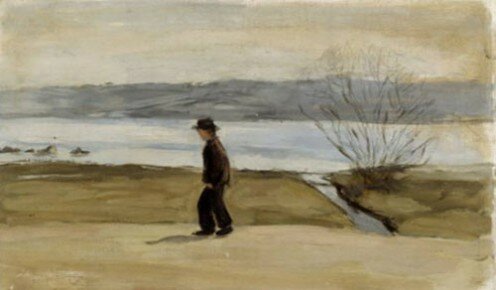
The Wounded Angel, Landscape Study, 1902
A V 4949
Ateneum
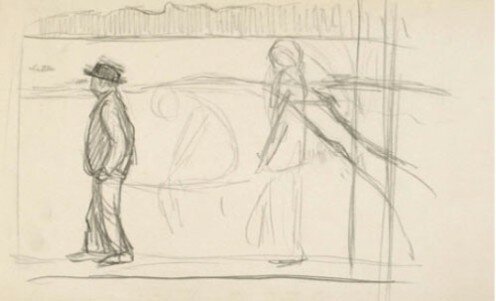
Sketch for the fresco in Tampere Cathedral (St John’s Church), undated
A V 4833:52
Ateneum
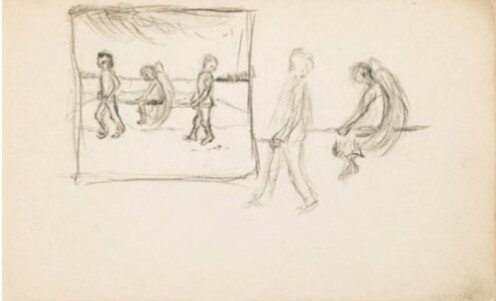
The Wounded Angel, sketch, 1902
Sketchbook A V 4830:1, sketch no. 4
Ateneum
Hugo Simberg spent many years preparing The Wounded Angel. His sketches and photographs tell us about its progress – in the early stages, the angel was pushed in a wagon by small devils. The central figure throughout the process was a wounded angel, however, and the setting a real place, Eläintarha Park in Helsinki. The pathway along Töölönlahti Bay remains there to this day.
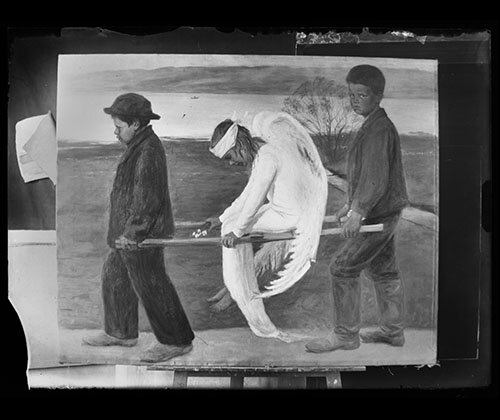
HS Sårad ängel 64
Photograph by Hugo Simberg of The Wounded Angel in progress. X-rays have shown that under the familiar version is this one in which the angel’s hair is darker and damp, and a small rowing boat is seen in the bay in the background.

The Wounded Angel, fresco, 1906
Tampere Cathedral
Photograph: Seppo Hilpo
Simberg painted a copy of the work for Tampere Cathedral. Note the addition of chimneys in the version made for the industrial town.
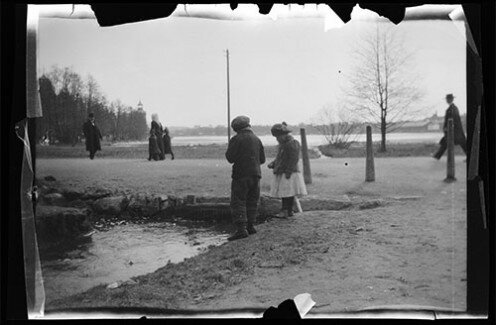
HS Sårad ängel 56.2
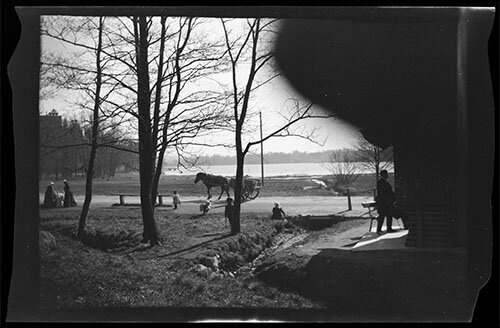
HS Sårad ängel 59
The setting of The Wounded Angel is at the northern end of Töölönlahti Bay in Helsinki. The brook that discharges into the bay as well as its surroundings were popular among children. In the spring, it was a great place to play water games. The brook’s channel has been altered over the years, but the pathway remains.
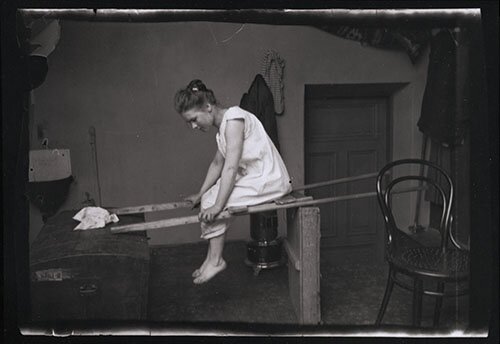
40018_912
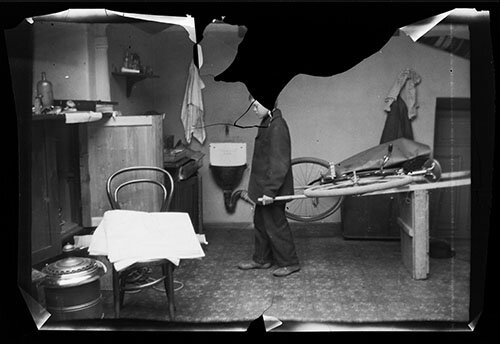
HS Sårad ängel 63
Simberg used several sitters when he was painting the piece. One of the sitters for the angel was a young woman with auburn hair. Simberg developed the painting in his studio in Helsinki, and finished it in summer 1903 at Niemenlautta. It has been suggested that some of the last sitters for the angel were Gertrud and Adrienne, daughters of Karl Magnus Gadd, the town physician of Viipuri, whose family members were regular summer guests at Niemenlautta. Might the little girl appearance and blonde hair have originated from them?
Hugo Simberg also painted two portraits of a little girl in summer 1903 in Niemenlautta. Morning belongs to the collections of the Ostrobothnian Museum. The sitter for the picture was Adrienne Gadd. The other painting, Girl, whose sitter was Gertrud Gadd, belongs to the collections of the Gösta Serlachius Fine Arts Foundation.
We cannot say with absolute certainty if the Gadd girls sat for The Wounded Angel. Perhaps there is no need to. Hugo Simberg left no sketches, photographs or written description of the last stages of the work’s completion and the transformation of the angel into a blonde girl. The identity of the sitter remains – as if by intention – a mystery.
Hugo Simberg wrote about the opening of the exhibition to his sister, Blenda:
“I want to share the good news with you – I was not rejected this year, even though the jury was terribly strict. It almost seems that I have achieved something of a grand succés among my colleagues and the members of the jury. Gallén is so excited that I can hardly take him seriously. His first words were the highest flattery of my work and, oddly, he seems quite beside himself with enthusiasm for the big painting. He said it gives him the impression that I had stood alone in a little cabin, huddled in the midst of a great forest with tree roots growing up to the corners of the cabin, and had painted in complete indifference to the outside world. He says that it radiates peace and harmony like no other work in the exhibition. – Even Edelfelt said nice things to me.”
– Letter to Blenda Simberg, 4 October 1903. Hugo Simberg Archive, Finnish National Gallery.
Read more
The Wounded Angel in our online Art Collections
Photographs and letters related to The Wounded Angel
Gertrud Gadd, one of the angel’s models?
The Wounded Angel, sketch drawings
Photographs by Simberg from Töölönlahti, Helsinki